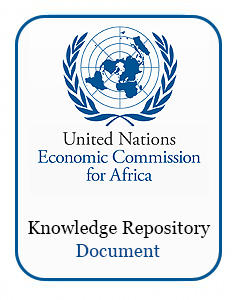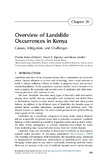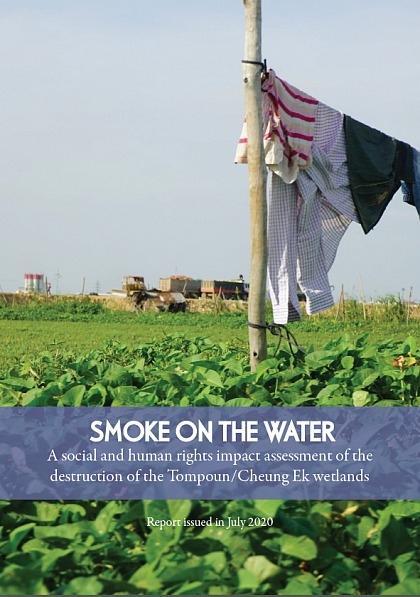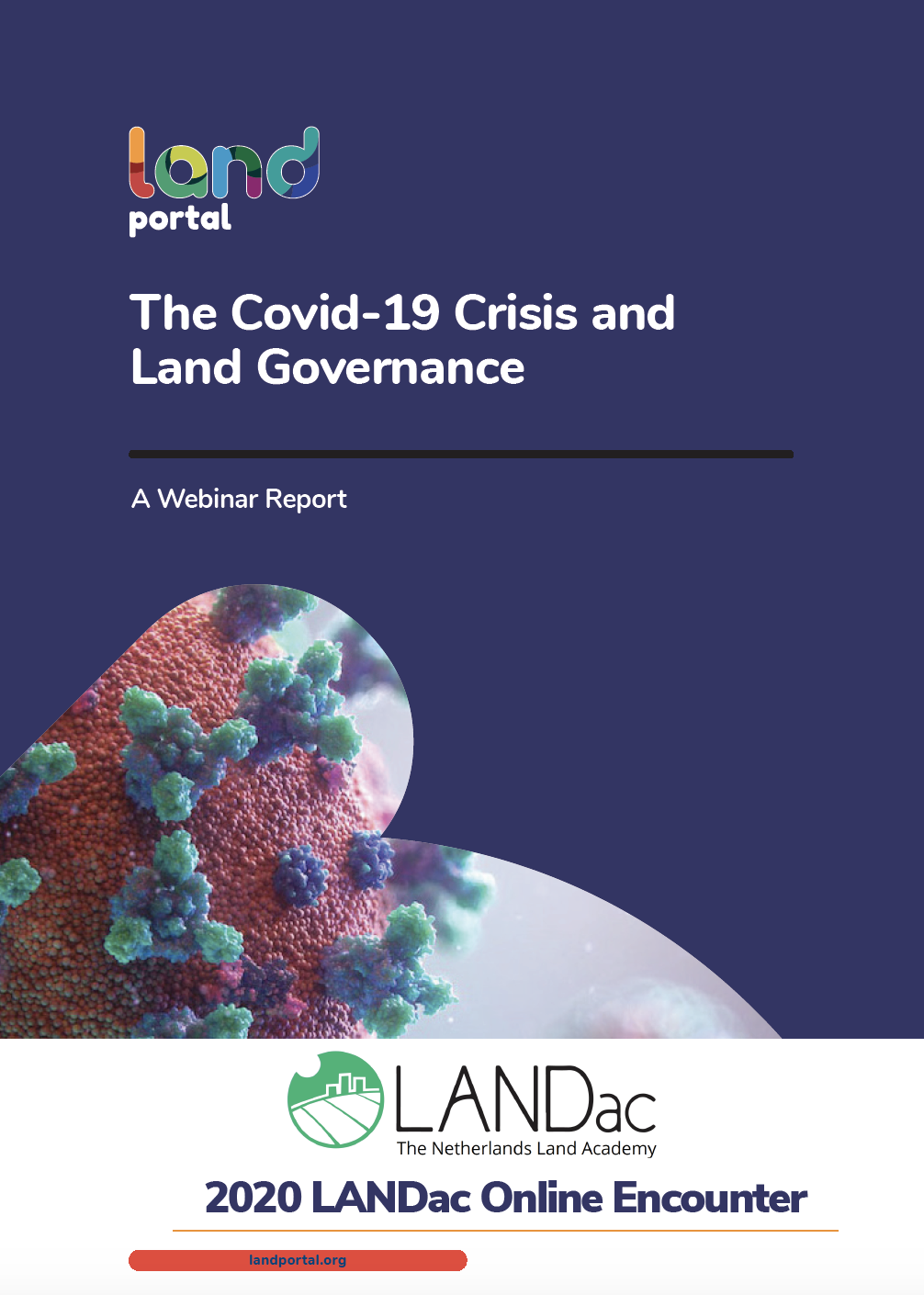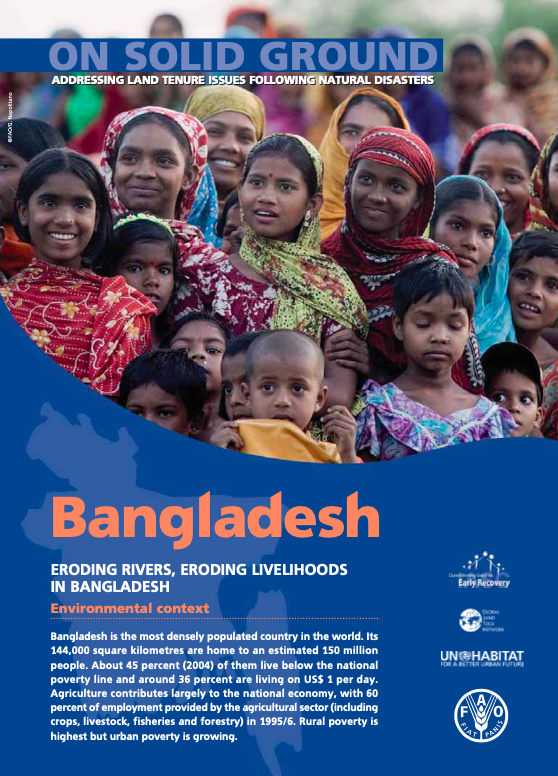Chapter 20 – Overview of Landslide Occurrences in Kenya: Causes, Mitigation, and Challenges
Natural disasters disrupt people's lives through displacements, destruction of livelihoods and property, deaths, and injuries. Consequently, they take back years of development, thus posing a major challenge to the achievement of the Millennium Development Goals especially the target of halving extreme poverty by 2015 and Kenya's set development goals as contained in Vision 2030.
Smoke on the Water: A Human Rights and Social Impact Assessment of the Destruction of the Tompoun/Cheung Ek Wetlands
More than one million people across Phnom Penh are facing the risk of increased flooding and over one thousand more families are at risk of evictions, loss of income and food insecurity as the ING City project and other unsustainable developments destroy the Tompoun/Cheung Ek wetlands in the capital’s south.
Country Report Brunei
This report is the first version of the Country Report for Brunei, which gives information on natural disaster risks of the country, industrial parks, major traffic infrastructure and lifeline utilities, and legislative systems relating to disaster management and business continuity.
COVID-19 and Public Health: Indigenous Peoples on the Front Line
Three-quarters of emerging infectious diseases are zoonoses, meaning they can be transmitted from animals to humans, with Ebola, SARS, MERS and now COVID-19 being examples. Scientists are warning that deforestation, industrial agriculture, illegal wildlife trade, climate change and other types of environmental degradation increase the risk of future pandemics.
The Covid-19 Crisis and Land Governance
This webinar took stock of the emerging insights on the impacts of the COVID-19 pandemic on land rights and discussed concerns about the expected mid-to-long term impacts on equitable and sustainable land governance.
The discussion built upon previous efforts of the broader land governance community, including the Quick-scan Survey on the COVID-19 crisis by LANDac and the LANDdialogue, insights from the LANDac Professional Learning Programme and the webinar and discussion series ‘Land Rights Implications of COVID-19’ by the Land Portal Foundation and its partners.
Informal settlements and access to data in the time of COVID: a case for sharing data for decision making
The spread of COVID-19 in South Africa and other countries in the region has again brought to the fore the fact that very dense, under-serviced, mostly informal, settlements are not healthy places to live. They are also places where the spread of a disease is difficult to prevent or manage.
The kind of emergency response that was required to address the imminent spread of COVID-19 highlighted the widespread vulnerability of the poorest, compounded by highly unequal access to services and ongoing unhealthy living conditions.
Eroding Rivers, Eroding Livelihoods in Bangladesh
Bangladesh is the most densely populated country in the world. Its 144,000 square kilometres are home to an estimated 150 million people. About 45 percent (2004) of them live below the national poverty line and around 36 percent are living on US$ 1 per day. Agriculture contributes largely to the national economy, with 60 percent of employment provided by the agricultural sector (including crops, livestock, fisheries and forestry) in 1995/6. Rural poverty is highest but urban poverty is growing.
Housing, Land and Property Law in Bangladesh
The Red Cross Red Crescent aims to respond to disasters as rapidly and effectively as possible, by mobilising its resources (people, money and other assets) and using its network in a coordinated manner so that the initial effects are countered and the needs of the affected communities are met.
The Australian Red Cross (ARC) is a key Partner National Society, supporting the International Federation of Red Cross and Red Crescent Societies' (IFRC) response to natural disasters in the Asia- Pacific.
Procesos relevantes de deterioro ambiental en el Perú
Presenta aspectos relevantes del deterioro ambiental en el Perú como la degradación del suelo agrícola, la deforestación en la región amazónica y fenómenos de geodinámica y climáticos, así como la degradación del medio urbano.
Anuario Estadístico de América Latina y el Caribe 2019 = Statistical Yearbook for Latin America and the Caribbean 2019
En el Anuario Estadístico de América Latina y el Caribe de la CEPAL se presenta un conjunto de estadísticas básicas que caracterizan la situación económica, sociodemográfica y ambiental de la región referidas a un período en particular. Esta información forma parte del conjunto de estadísticas disponibles en CEPALSTAT, el portal de bases de datos y publicaciones estadísticas de la CEPAL http://estadisticas.cepal.org/cepalstat/ [en línea].

